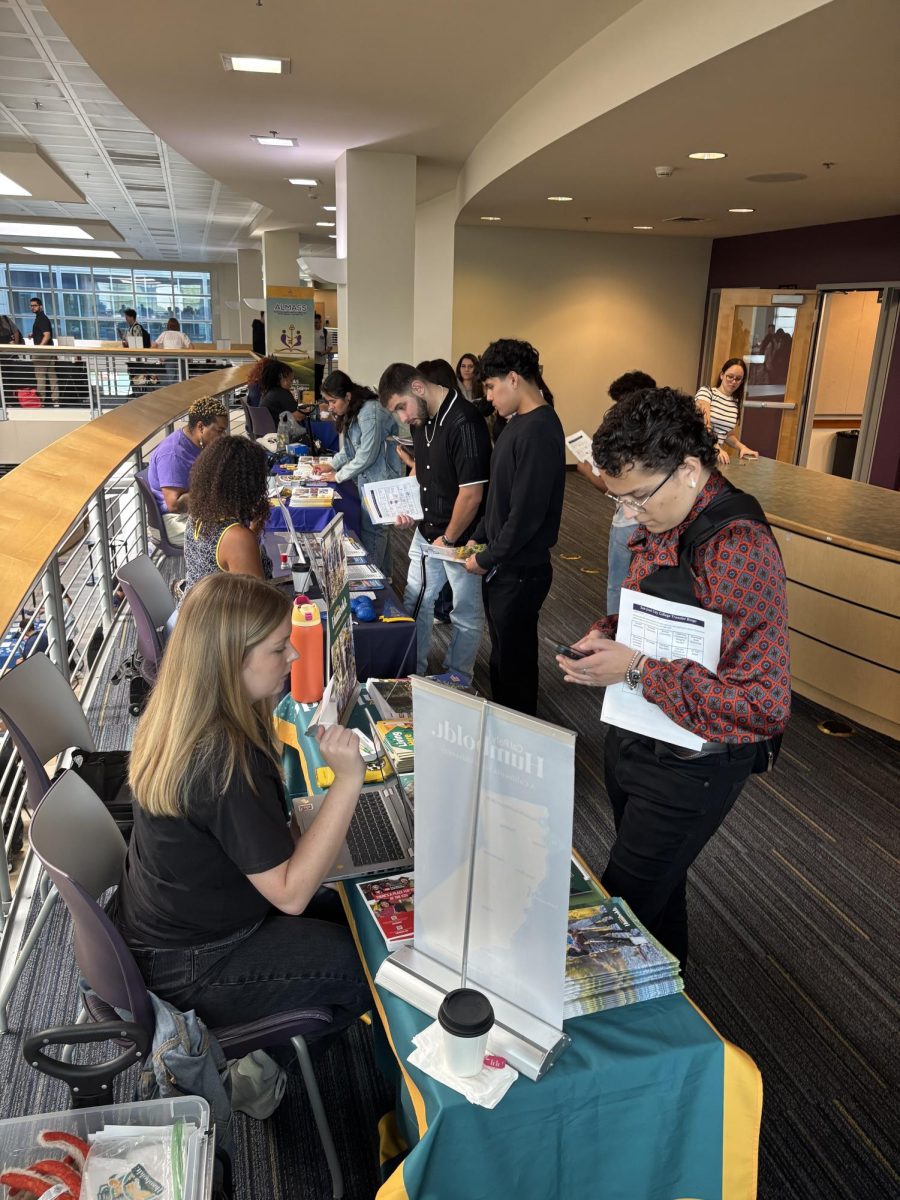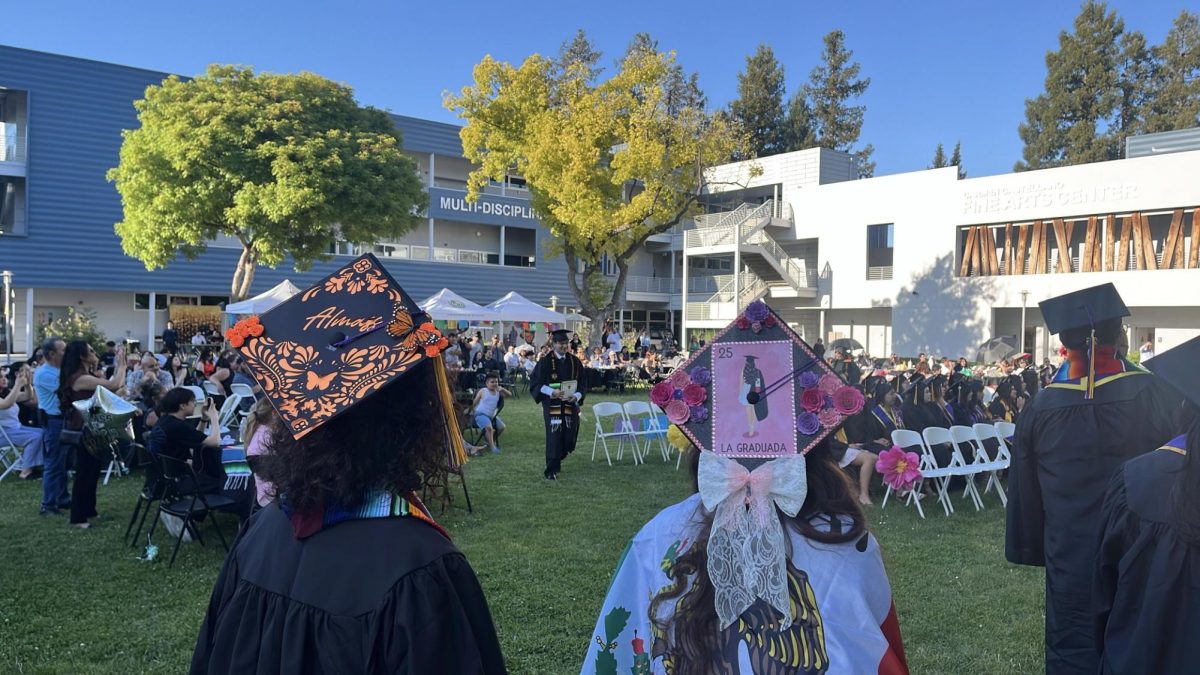From cooling beer to making circuit wires, IBM scientist and San Jose City College adjunct professor Richard DiPietro knows his chemistry.
DiPietro discussed his education and career in a chemistry presentation, which was jointly sponsored by SJCC’s Society for Advancement of Chicanos and Native Americans in Science and the American Chemical Society, to community members, faculty and students in the Science Building on April 20.
Using anecdotes and humor, DiPietro talked about his career’s opportunities, such as being challenged to figure out the best way to cool beer on the TV show “MythBusters.”
The “MythBusters” team “was maintaining that the best way to cool a beer was with a CO2 fire extinguisher, and I maintained at that time that the best way to do it was with liquid nitrogen,” DiPietro said. “By the time mine was done and his was done, mine was a solid brick of beer.”
DiPietro’s eclectic background is one of the reasons SJCC chemistry instructor and SACNAS adviser Jose Cabrera asked DiPietro to present at SJCC.
He has “really interesting work coupled with a connection with students,” Cabrera said. “I thought they’d be ingredients for a very entertaining and intellectually stimulating presentation.”
DiPietro’s interest in chemistry began at 7 years old with a chemistry set and eventually materialized into a synthetic medicinal chemistry Ph.D. from the University of Michigan.
After completing his education, DiPietro worked with steroidal materials and cyclic polypeptides, which are compounds used in medications, before being asked to work at IBM.
DiPietro’s work at IBM revolved around circuitry, where wires can be as close as 22 nanometers apart, which is one thousandth the diameter of a strand of hair on an ant.
“Chemistry and physics is how you build something like this,” DiPietro said, referring to the miniscule circuitry wires. “And I’m the chemistry part.”
Some audience members were surprised at the link between IBM, famous for its computers, and chemistry.
“I would never think to apply chemistry to electronics,” said Amanda Martinez, 23, chemical engineering major.
After years of working in the lab, DiPietro’s passion for chemistry took him to another area of the field.
“I am not working in the lab anymore because I got very interested in patents,” DiPietro said, “because patents are really the trade of the chemical industry.”
DiPietro’s position entails looking at IBM’s patents and comparing them to other companies’ patents.
Audience members responded positively to DiPietro’s down-to-earth approach to chemistry.
“It was very interesting,” said Kristina Vasquez, 20, kinesiology major. There was “a lot of information and he (DiPietro) made it fun.”
Cabrera said he saw the presentation as an opportunity for students to see the real-world application of science and would like to eventually hold presentations every Friday.
Cabrera said he would like students to realize the information in their textbooks “was actually obtained via the human interaction with the environment and trying to understand the environment and nature itself, the physical universe, little by little, over many years now.”
Like Cabrera, DiPietro advised students not to forget the practical nature of science.
“Be curious,” DiPietro said. “Collect something. If you see an unexpected result, don’t throw it in the garbage can. Follow it up. Figure it out.”






